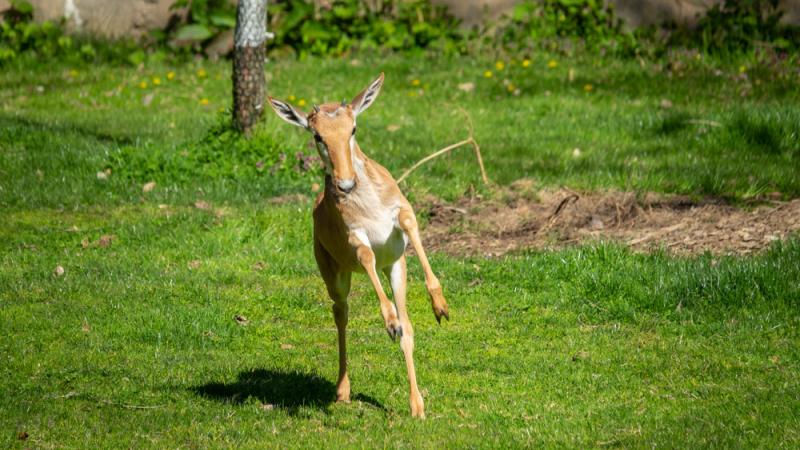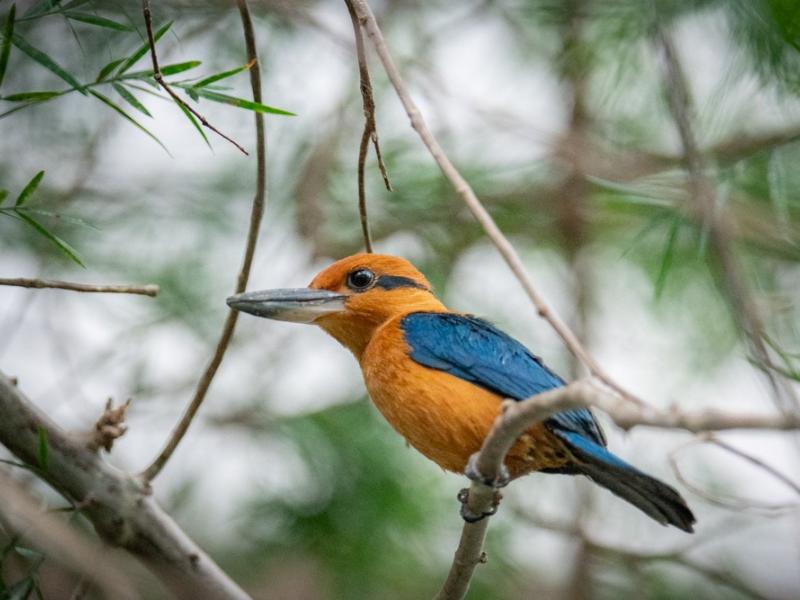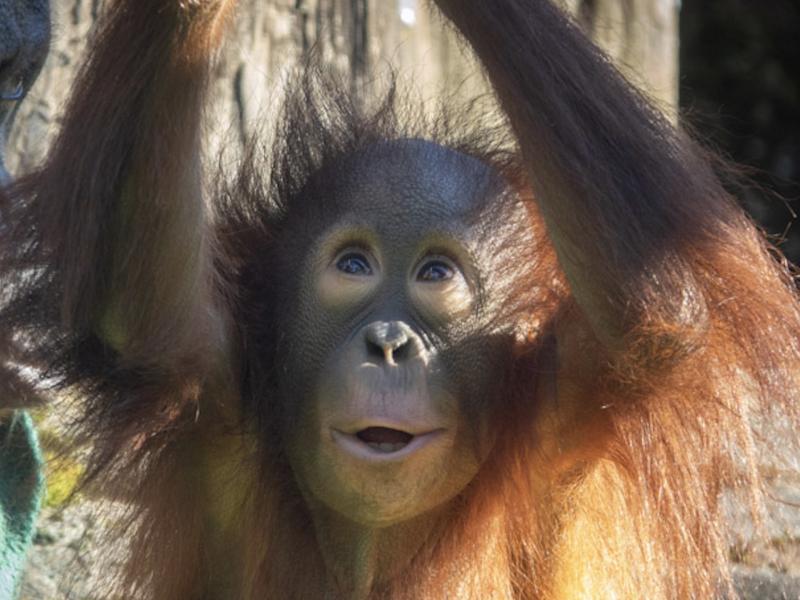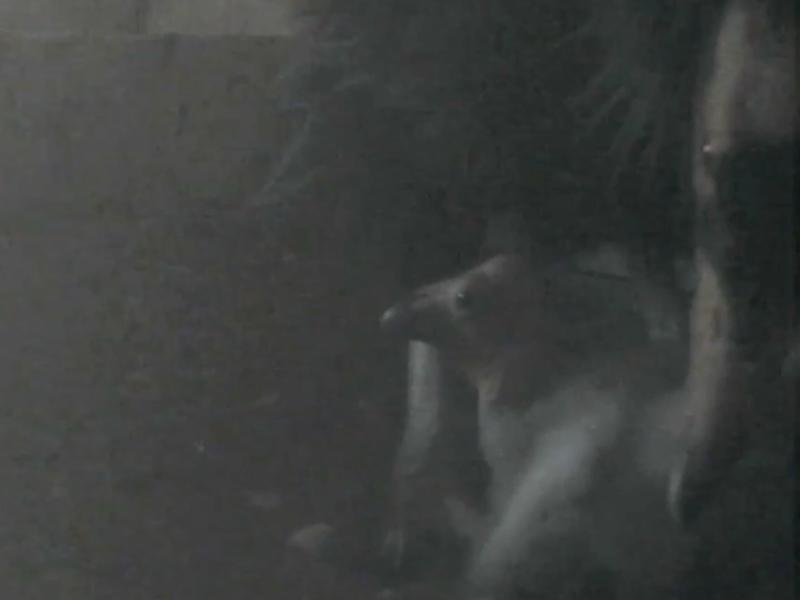Off and running: 2-month-old bontebok makes zoo debut

Tutula, a rare African antelope calf, frolics around her outdoor habitat for first time
Winter the bontebok’s new calf has a name: Tutula, selected by her care staff in honor of her Tutu Tuesday birthday — and also, perhaps, because she is “too, too cute.” Oregon zoo guests got their first glimpse of the 2-month-old this morning, as she frolicked around her grassy home in the zoo’s Africa Savanna area.
“It was great to see them running around and enjoying themselves,” said Kelly Gomez, who oversees the zoo’s Africa section. “She had so much energy — it was like watching Bambi’s first trip to the meadow but in real life.”
Seeing Tutula thriving is especially satisfying, Gomez said, given the calf’s shaky start to life. Keepers were thrilled when Winter gave birth on Feb. 2 — bonteboks were once considered among the most imperiled mammals on the planet, and each birth is considered an important step toward ensuring their long-term survival. Excitement quickly turned to concern though, when they saw that Winter, an inexperienced mom, was not nursing her newborn.
“She was taking care of Tutula right away,” Gomez said. “But she just wasn’t nursing. Sometimes new moms need a little help getting started. We were giving the calf supplemental bottle-feedings and then returning her back to mom. After a few days, Winter started to nurse her a little bit, and we gradually reduced the bottle-feedings. She’s a very strong, robust little calf.”
Tutula now weighs around 50 pounds, and on warm days guests may see her out exploring the zoo’s Africa savanna area with her mom.
Gomez says the small survivor is a testament to one of the most inspiring conservation stories in history: living proof of the impact people can have — both positive and negative — on wildlife and species conservation.
“A couple hundred years ago, the bontebok was headed for almost certain extinction,” Gomez said. “The fact that they are still around shows how people can make a difference in helping wildlife.”
Though unfamiliar to most Americans today, the bontebok “deserves a place in the annals of conservation history,” according to The Nature Conservancy’s Matt Miller.
“It is arguably the first African animal saved from human-caused extinction,” said Miller, writing in the conservancy’s science blog. “Its rescue is flat-out one of the most dramatic conservation success stories anywhere.”
In a story that roughly parallels that of the American bison, the bontebok was hunted to the brink of extinction in the 18th and 19th centuries by Dutch settlers to southern Africa, many of whom viewed the native antelope there as pests competing for farmland. Another antelope species, the bluebuck, was declared extinct in 1799, and it seemed inevitable the bontebokwould not be far behind.
By 1837, all that stood between the last 17 bontebok on the planet and certain annihilation was a fence. That year, some sympathetic farmers enclosed the herd safely inside their own property, effectively creating the first African antelope preserve.
The measure wouldn’t have worked except for one evolutionary quirk: Bontebok can’t jump. While other antelope species like the impala, eland and kudu almost fly — soaring 10 feet into the air or higher — bontebok can only manage small leaps and could thus be contained by ordinary livestock fencing.
“The ability to jump,” Miller said, “would have been a leap into extinction.”
In 1931, Bontebok National Park was established, and the species gradually started to rebound. Today the bontebokpopulation is estimated to be around 2,500 to 3,000.
“It’s an incredible conservation story,” Gomez said. “Hopefully, we can inspire some similar success stories for the future.”
More News

Zoo welcomes ultra-rare sihek kingfishers
The Oregon Zoo is home to many critically endangered species, but perhaps none as rare as its newest arrivals: a trio of sihek kingfishers.April 25, 2024

Jolene turns 2: Zoo to celebrate orangutan's 2nd birthday
The littlest member of the orangutan family is celebrating a big milestone this week: Jolene will turn 2 on Saturday.April 12, 2024

Seven chicks and counting: Zoo welcomes first condors of 2024
Seven fluffy chicks hatched last month at the Oregon Zoo’s Jonsson Center for Wildlife Conservation.April 5, 2024

